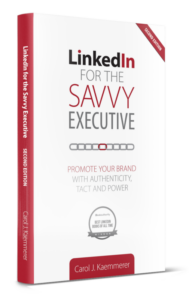

What is Ingaged Leadership? It is a new leadership practice in which leaders invite everyone to not just work hard, but to commit their best ideas, ambitions, emotions, and even their hearts to a new kind of partnership with the companies they serve.
How is Ingaged Leadership practiced? Perhaps the best way to explain is to profile two executives.
Executive A
This executive didn’t like to ask for advice, help, ideas, or input from anyone. He summed up his leadership philosophy to me when he said, “I have to have all the answers because that’s what people look for in a leader. I am not supposed to ask; I am supposed to know. Acting otherwise would only weaken my ability to lead.”
He told people how to do their jobs. He prioritized their tasks, offered incentives, and promoted employees who did want he told them to do. He also disciplined people when they didn’t hit the targets he had set out. Sometimes he fired people and believed that doing so would “send a message” to other people to deliver what he demanded.
Was Executive A successful? According to some yardsticks, he was. He had held a top leadership position in his company for more than two decades. He was often able to hit sales quotas and deliver measurable results. But at the same time, he had learned to live with certain chronic problems in his unit. Work for most people was repetitive. Turnover was high. The people he supervised worked in an overly politicized climate where they competed instead of cooperated. People withheld their best ideas – who was listening? – and hoped to use them later in their next jobs. Things were getting done, but overall performance was far from optimized.
Executive B
Executive B had also worked for more than 20 years in top executive positions. Yet she summed up her own leadership in terms far different from those used by Executive A. “At a certain point, I came to realize that the best ideas flow not from the top down, but the other way around. I now believe that the more I can question my own perspectives, listen to people, and let them do what they really believe in, the more success will follow.”
Was Executive B successful? Yes, she was. She had won the hearts and loyalty of many people – those she supervised, but also her peers and the company’s founder. Retention rates were high, expectations were exceeded, and people liked working in her unit because something new was always happening.
Was everything perfect? No. But as she summarized her situation, “I’m a work in progress, but I expect other people to be works in progress too. We’re all in this process together. We succeed, fail, kick around big ideas, and come to work energized because we are all engaged in an exciting, shared process.”
Ingaged Leadership Is Progress, Not Perfection
It seems that nearly every week I get a stream of emails from high-energy authors and consultants offering instant formulas for achieving personal or organizational success. Let me stress that Ingaged Leadership is not an instant anything. It is a process that leads to a new way to lead but it is not always easy, and rarely fast. But it is highly worthwhile even from day one because even small increases in a leader’s level of Ingagement yield outsized returns.
Key Activities of Ingaged Leaders
Here are some key practices of Ingaged Leadership. I would encourage you to start with one or two that you feel have the potential to yield the most improved results from your leadership. You can add more. But let me say again that the results you achieve may be greater than you anticipate.
- Accept that other people’s ideas can be as good, or better, than yours – even though you are the nominal leader. Strive to find ways to prove other people right . . . not wrong.
- Acknowledge and use ideas from people at all levels in your organization. You cannot use every idea or suggestion, but when people know they have been heard, they are more likely to become invested in their work. As a result, your entire organization will improve and grow.
- Allow people to try things that they believe deeply in, even if you have doubts. The most important thing is for your organization to be right . . . not for you to be right.
- Consider sharing all company financial data – both good and bad – with everyone in your organization. When people know it, they are more aware of your current challenges and often offer deeper support. I have even seen times when people are willing to make sacrifices to support the greater wellbeing of their organizations.
- Cultivate the ability to ask for help when you need it. And offer help freely when you see the need.
- Go beyond being a good listener and strive to really hear the meaning of what people are saying. In my own leadership journey, that meant I had to stop listening for what other people were saying that was wrong and start listening for things that were right. It was a subtle, yet profoundly transformative, step in my own journey to leadership.
- Have everyone in your organization – including company leaders – take part in 360ᴼ job reviews in which they are reviewed by their peers and the people they supervise. Share that feedback with everyone in your organization.
- Introduce new ways for people on all levels to share ideas on an equal basis, such as open meetings where ideas are captured, developed, and put into practice when possible.
- Invite everyone to contribute to, define and refine your company’s mission and vision. I especially like to start meetings by asking people to state the company’s vision, using their own words. In this way, people become invested in what your company is and in what it is becoming.
- Surround yourself with people with different skill sets and who have the ability to challenge you. Also, avoid the temptation to build a team of “yes people” who only tell you positive things about your ideas and plans. The right kind of disagreement brings greater progress.
- Invest lavish labor to build a positive company culture where people respect each other, expect the best, and communicate in ways that convey the underlying belief that, “We can do this.” Attitude is a multiplier. One person with a negative attitude can literally cripple your company. But even one person with a positive outlook can help lead your organization to new levels of achievement, profitability, and success.
About the Author
Evan Hackel, the creator of the concept of Ingaged Leadership, is a recognized business and franchise expert and consultant. Evan is also a professional speaker and author.
Evan is Principal and Founder of Ingage Consulting, a consulting firm headquartered in Woburn, Massachusetts. A leader in the field of training as well, Evan serves as CEO of Tortal Training, a Charlotte North Carolina-based firm that specializes in developing and implementing interactive training solutions for companies in all sectors. To learn more about Inage Consulting and Evan’s book Ingaging Leadership, visit Ingage.net




